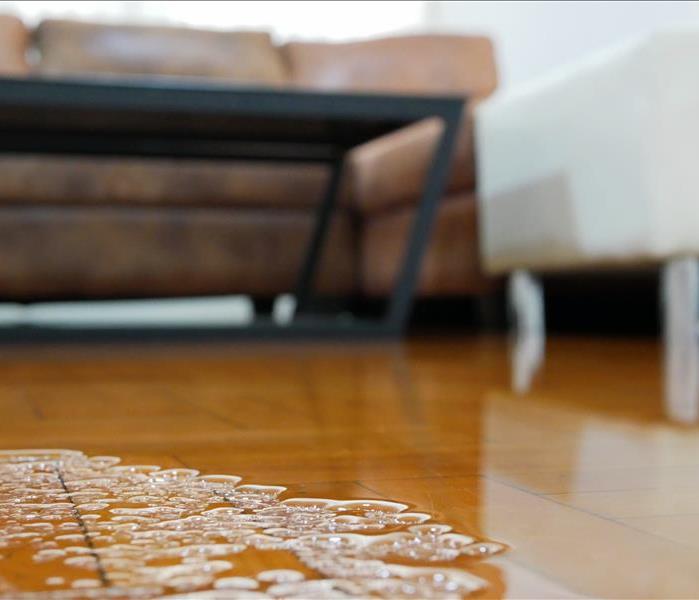Flood Water Damage Insurance Regulations for Commercial and Residential Property Owners
10/12/2017 (Permalink)
Rain Storms and Flooding - Disaster Education - NFIP and FEMA
Shasta County Winter water damage from storms and rains are fast approaching. Property owners and managers should be aware of the National Flood Insurance Program (NFIP) and how it works with Federal Emergency Management Agency (FEMA) in the case of floods and the resulting damage caused. Flood waters, whether they are from rising rivers and streams or rainwater, can cause flooding resulting in damage to property. If water touches the ground and enters any structure, it is considered flood water, which is not covered by regular or commercial insurance policies.
These flood waters are considered Category 3, which is highly contaminated and can contain pathogenic, toxigenic, or other harmful agents from sewage, silt, and debris this can cause significantly adverse reactions to humans when consumed, or when in contact with the CAT3 water. This can create civil liability and as of January 1, 2017 cause substandard housing issues if the damage, such as mold after flooding, is not dealt with correctly.
With NFIP policies in place, which is on a county by county basis or if the county or state declares an emergency in an affected flood area, it is possible that FEMA could pay the flood claims. These policies have very specific restrictions on all FEMA/NFIP claims. The 2017 FEMA rules and regulations are as follows, and are subject to change on a yearly basis:
Water damage clean-up service providers must provide a complete drying log for every day of the process with the invoice. This includes Hygroscopic readings, that show how much moisture is in the air and atmosphere. Also, daily measurements of any materials being dried such as structural wood, cabinets and some flooring that does not require removal such as vinyl composition tile (VCT) when it is undamaged. If logs are not provided, these line items will be rejected and NOT covered by FEMA/NFIP.
FEMA/NFIP does NOT pay for drying gear that is placed prior to all demolition being complete. Once all porous materials have been removed, then drying equipment will be allowed.
FEMA/NFIP does NOT cover water extraction from wet carpet. It is less heavy for restoration technicians to lift and remove extracted lost carpet.
FEMA/NFIP does NOT cover air scrubbers and Ozone machines. These machines remove a variety of odors and airborne contaminates caused by animals, cigarette smoke, mold and mildew, or fire and water damage. What is pertinent to flood claims are airborne E Coli, giardia, or similar pathogens.
FEMA/NFIP does NOT cover content manipulation charges, such as removal of household furniture. A good way to judge the contents of a house versus the structure: If you could turn your house upside-down and shake it, whatever falls out is considered contents, whatever is bolted, nailed, or screwed in place, such as cabinets, are considered part of the structure. NFIP does have content coverage policies, but most of these have a separate deductible.
FEMA/NFIP does NOT cover equipment cleaning charges. The EPA, OSHA, and IICRC industry standards require the cleaning and sanitizing of all equipment used during a CAT3 flood damage restoration.
FEMA/NFIP does NOT cover generators needed to run restoration equipment, such as dehumidifiers and air movers. Many flood situations are followed by power outages due to the nature of the flooding, either by the force of it or due to the power company cutting the power for safety reasons. By the time that demolition is complete the power is usually on in time to set the gear for the structural drying process.
FEMA/NFIP does NOT cover the costs of Personal Protective Equipment (PPE) even though this is required by OSHA. This includes Tyvek suits and respirators, which are essential for the safety of restoration technicians to reduce or eliminate exposure to harmful chemicals and mold.
FEMA/NFIP does NOT cover secondary damage. An example of secondary damage: Two feet of water in your home creating elevated humidity levels that absorb into hydroscopic materials causing damage like sagging or collapsing ceilings from damp, heavy dry wall.
As stated previously, these rules and regulations change on a year-to-year basis. If you have flood damaged property you can go online to: https://www.fema.gov/information-property-owners
Current information and a list of counties covered is found at: https://www.fema.gov/national-flood-insurance-program-community-status-book
Please feel free to contact me for any questions or comments: Doug Stephens, franchise owner: SERVPRO of North Shasta, Trinity & Greater Tehama Counties at (530) 222-0200.
This information is provided so property owners do not get blind-sided when receiving the bill from a flood loss. If you are aware of the restrictions involved with FEMA/NFIP claims, you can negotiate or perform some of these services yourself.






 24/7 Emergency Service
24/7 Emergency Service
